Related Research Articles
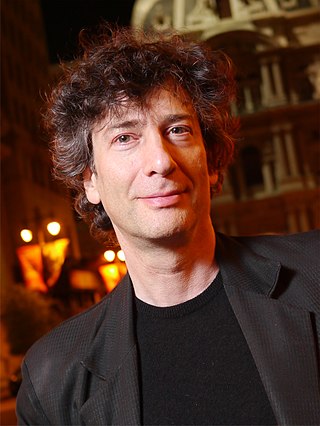
Neil Richard MacKinnon Gaiman is an English author of short fiction, novels, comic books, graphic novels, audio theatre, and screenplays. His works include the comic book series The Sandman and the novels Good Omens, Stardust, Anansi Boys, American Gods, Coraline, and The Graveyard Book. He co-created the TV series adaptions of Good Omens and The Sandman.

Raphael Aloysius "R. A." Lafferty was an American science fiction and fantasy writer known for his original use of language, metaphor, and narrative structure, Lafferty also wrote a set of four autobiographical novels, a history book, and several novels of historical fiction.

Of Mice and Men is a 1937 novella written by American author John Steinbeck. It narrates the experiences of George Milton and Lennie Small, two displaced migrant ranch workers, who move from place to place in California in search of new job opportunities during the Great Depression in the United States.
Edward Morley Callaghan was a Canadian novelist, short story writer, playwright, and TV and radio personality.

Chinghiz Torekulovich Aitmatov was a Kyrgyz author who wrote mainly in Russian, but also in Kyrgyz. He is one of the best known figures in Kyrgyzstan's literature.

Australian literature is the written or literary work produced in the area or by the people of the Commonwealth of Australia and its preceding colonies. During its early Western history, Australia was a collection of British colonies; as such, its recognised literary tradition begins with and is linked to the broader tradition of English literature. However, the narrative art of Australian writers has, since 1788, introduced the character of a new continent into literature—exploring such themes as Aboriginality, mateship, egalitarianism, democracy, national identity, migration, Australia's unique location and geography, the complexities of urban living, and "the beauty and the terror" of life in the Australian bush.
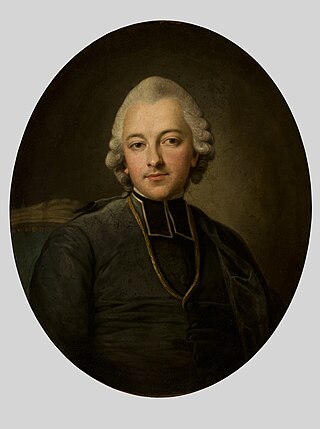
Fables and Parables, by Ignacy Krasicki (1735–1801), is a work in a long international tradition of fable-writing that reaches back to antiquity.
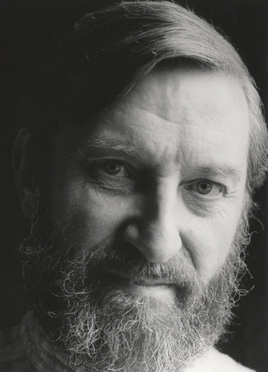
Henry Reymond Fitzwalter Keating was an English crime fiction writer most notable for his series of novels featuring Inspector Ghote of the Bombay CID.
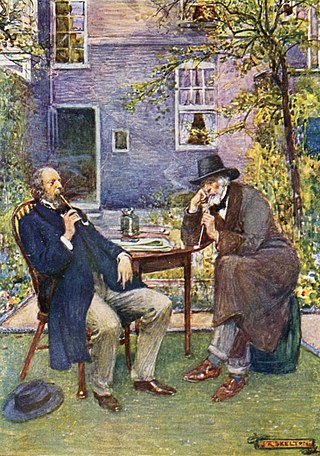
Victorian literature is English literature during the reign of Queen Victoria (1837–1901). The 19th century is considered by some to be the Golden Age of English Literature, especially for British novels. It was in the Victorian era that the novel became the leading literary genre in English. English writing from this era reflects the major transformations in most aspects of English life, from scientific, economic, and technological advances to changes in class structures and the role of religion in society. The number of new novels published each year increased from 100 at the start of the period to 1000 by the end of it. Famous novelists from this period include Charles Dickens, William Makepeace Thackeray, the three Brontë sisters, Elizabeth Gaskell, George Eliot, Thomas Hardy, and Rudyard Kipling.
George Reginald Turner was an Australian writer and critic, best known for the science fiction novels written in the later part of his career. His first science fiction story and novel appeared in 1978, when he was in his early sixties. By this point, however, he had already achieved success as a mainstream novelist, including a Miles Franklin Award, and as a literary critic.

The Fox and the Hound is a 1967 novel written by American novelist Daniel P. Mannix and illustrated by John Schoenherr. It follows the lives of Tod, a red fox raised by a human for the first year of his life, and Copper, a half-bloodhound dog owned by a local hunter, referred to as the Master. After Tod causes the death of the man's favorite hound, man and dog relentlessly hunt the fox, against the dual backdrops of a changing human world and Tod's normal life in hunting for food, seeking a mate, and defending his territory. As preparation for writing the novel, Mannix studied foxes, both tame and wild, a wide variety of hunting techniques, and the ways hounds appear to track foxes, seeking to ensure his characters acted realistically.

David Manning Foster is an Australian novelist and scientist. He has written a range of satires on the theme of the decline of Western civilization and produced short stories, poetry, essays, and several radio plays.
Literary realism is a literary genre, part of the broader realism in arts, that attempts to represent subject-matter truthfully, avoiding speculative fiction and supernatural elements. It originated with the realist art movement that began with mid-nineteenth-century French literature (Stendhal) and Russian literature. Literary realism attempts to represent familiar things as they are. Realist authors chose to depict every day and banal activities and experiences.

Ion Llewellyn Idriess was a prolific and influential Australian author. He wrote more than 50 books over 43 years between 1927 and 1969 – an average of one book every 10 months, and twice published three books in one year. His first book was Madman's Island, published in 1927 at the age of 38, and his last was written at the age of 79. Called Challenge of the North, it told of Idriess's ideas for developing the north of Australia.
J. R. R. Tolkien's bestselling fantasy novel The Lord of the Rings had an initial mixed literary reception. Despite some enthusiastic early reviews from supporters such as W. H. Auden, Iris Murdoch, and C. S. Lewis, literary hostility to Tolkien quickly became acute and continued until the start of the 21st century. From 1982, Tolkien scholars such as Tom Shippey and Verlyn Flieger began to roll back the hostility, defending Tolkien, rebutting the critics' attacks and analysing what they saw as good qualities in Tolkien's writing.

The Cupboard Under the Stairs is a Miles Franklin Award-winning novel by Australian author George Turner. This novel shared the award with The Well Dressed Explorer by Thea Astley.
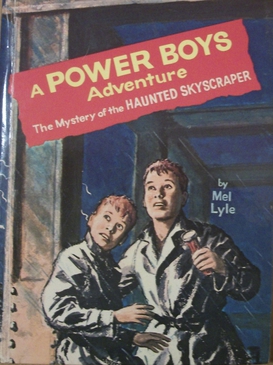
The Power Boys are a series of six juvenile mystery novels that were published from 1964 to 1967 by Whitman Publishing. The books were written by Mel Lyle, a pseudonym, and illustrated by Raymond Burns.

English literature is literature written in the English language from the English-speaking world. The English language has developed over the course of more than 1,400 years. The earliest forms of English, a set of Anglo-Frisian dialects brought to Great Britain by Anglo-Saxon invaders in the fifth century, are called Old English. Beowulf is the most famous work in Old English, and has achieved national epic status in England, despite being set in Scandinavia. However, following the Norman conquest of England in 1066, the written form of the Anglo-Saxon language became less common. Under the influence of the new aristocracy, French became the standard language of courts, parliament, and polite society. The English spoken after the Normans came is known as Middle English. This form of English lasted until the 1470s, when the Chancery Standard, a London-based form of English, became widespread. Geoffrey Chaucer (1343–1400), author of The Canterbury Tales, was a significant figure in the development of the legitimacy of vernacular Middle English at a time when the dominant literary languages in England were still French and Latin. The invention of the printing press by Johannes Gutenberg in 1439 also helped to standardise the language, as did the King James Bible (1611), and the Great Vowel Shift.

Nordy Bank is a children's adventure novel by Sheena Porter, published by Oxford in 1964 with illustrations by Annette Macarthur-Onslow. Set in the hills of Shropshire, it features children whose camping holiday seems to engage the prehistoric past. Porter won the annual Carnegie Medal for excellence in British children's literature.
This article presents a list of the historical events and publications of Australian literature during 1967.
References
- 1 2 Austlit - The Lame Dog Man by George Turner
- ↑ "New Fiction" by Neil Jillet, The Age, 30 september 1967, p23